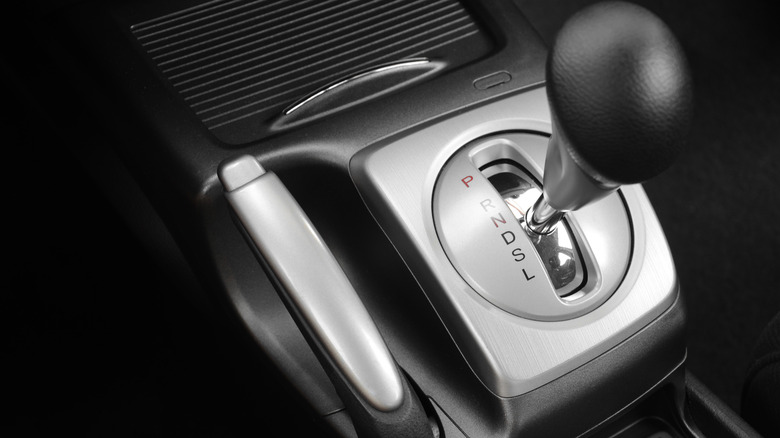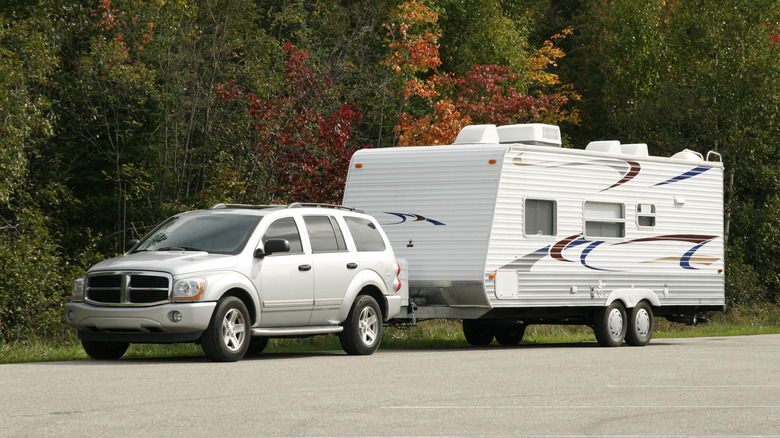What Does The 'L' Stand For On Your Car's Transmission Gear Selector?
Chances are you're familiar with most of the options on an automatic car's gearstick. The PRNDL acronym more than speaks for itself, with drivers using the Park, Reverse, Neutral, and Drive gears daily. However, the "L" at the end might bring a surprising amount of confusion, and many may be embarrassed to admit they don't know what it stands for.
Although it's rarely, if ever, used, the "L" on an automatic transmission stands for "Low" gear. Much like the rest, this option is self-explanatory, as it puts your car in its lowest setting, equaling the first or second gear of a manual transmission. While it's only useful in a handful of circumstances, "Low" sends less fuel into the engine, giving it more torque at the cost of power.
The gear essentially locks your vehicle into slower speeds but sends more force into the wheels. Regardless of whether you use the "L" setting, your vehicle technically shifts into the gear every time you start it, slowly moving past it as you speed up.
When to use 'L'
Despite most drivers never putting their cars into "L," there are still a few times when you should use the low gear. Since it gives you more torque, it's effective whenever you need more power behind your wheels. Drivers can take advantage of this when traveling through mountains or climbing and descending steep hills. However, its most common use is with towing. "Low" gives your car more pulling power, making it helpful when hauling a trailer, boat, or another vehicle.
However, drivers should proceed with care, as every car has a maximum speed you shouldn't exceed in low gears to ensure safe travel. Another use is for driving through dangerous weather, like snow and ice. Since you'll be in a lower gear, your car will move slower, and the extra torque will give your wheels a better grip on slippery roads. Essentially, "Low" makes driving through snow and ice much safer.
However, many newer vehicles have removed the "L" from automatic transmissions, with modes like Manual, Tow, and Descent Control replacing it. These settings effectively offer the same as the traditional "L," but they're much easier to understand without looking up what the gear does.

